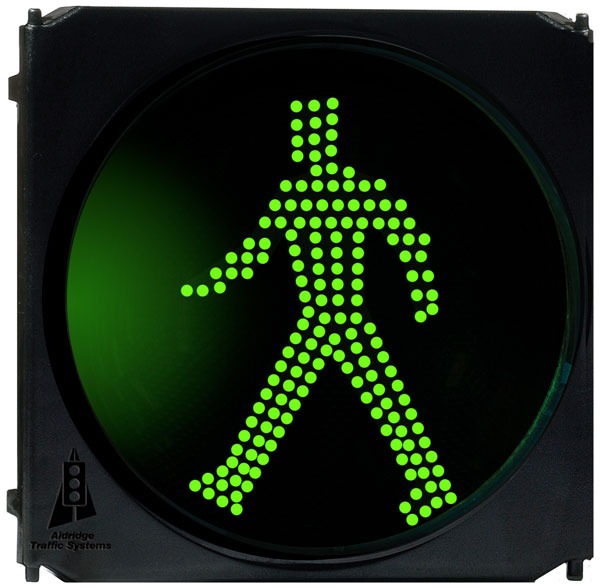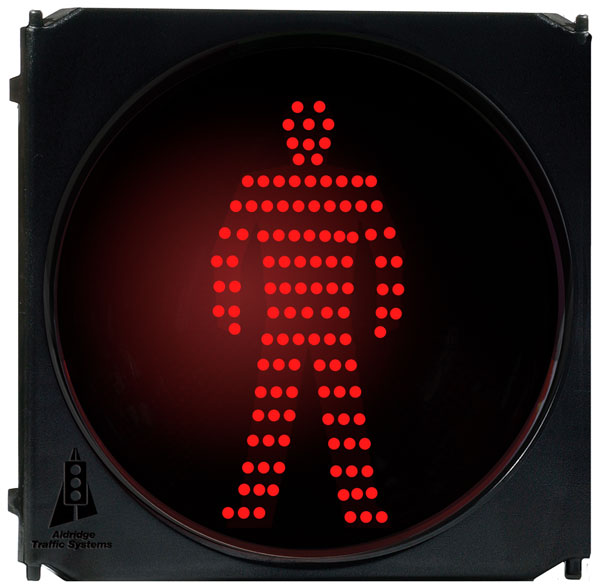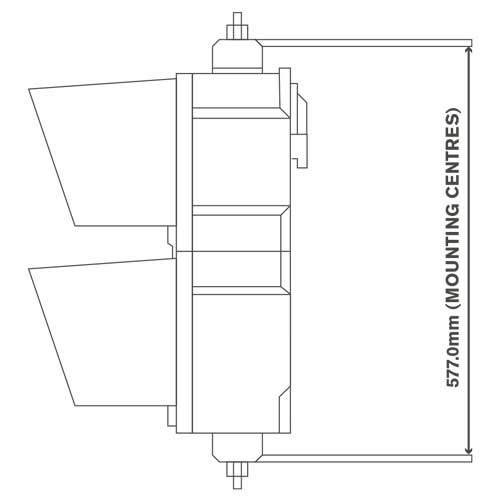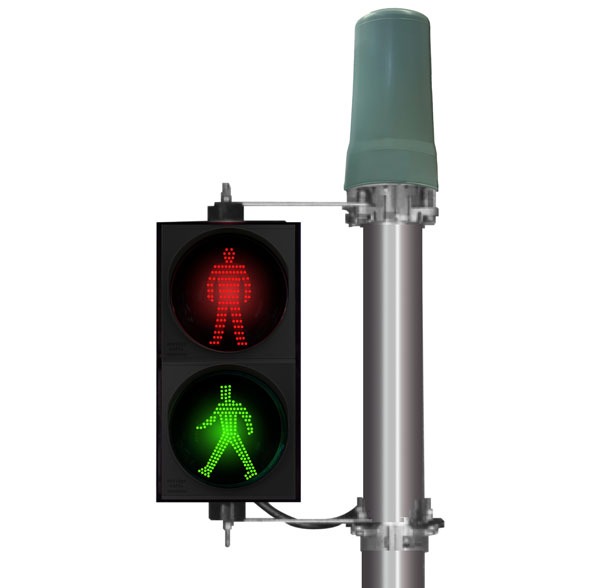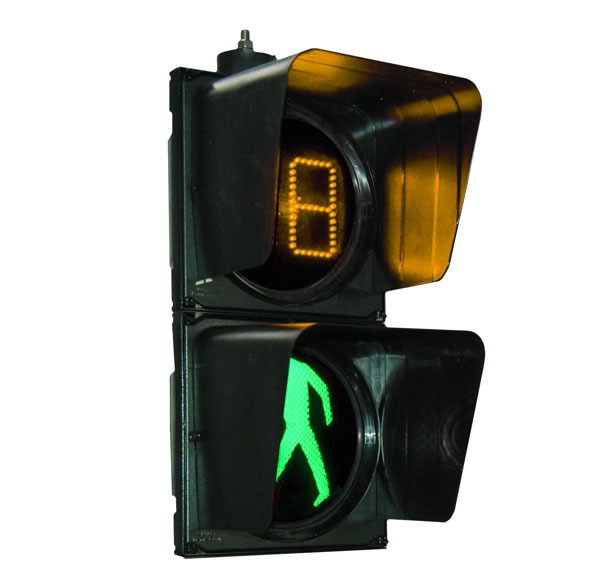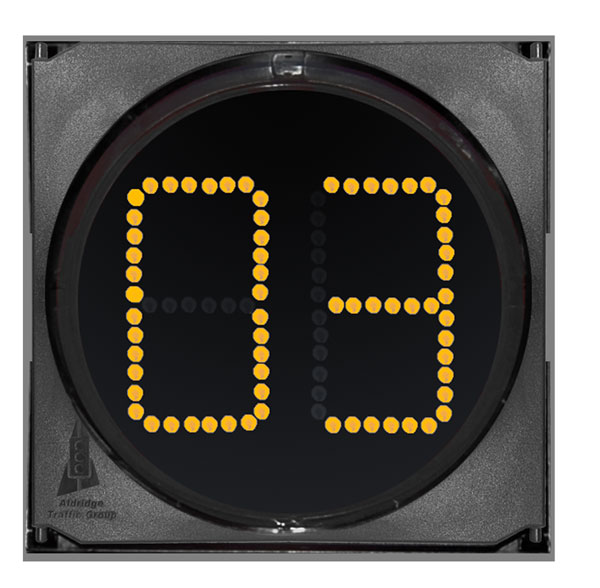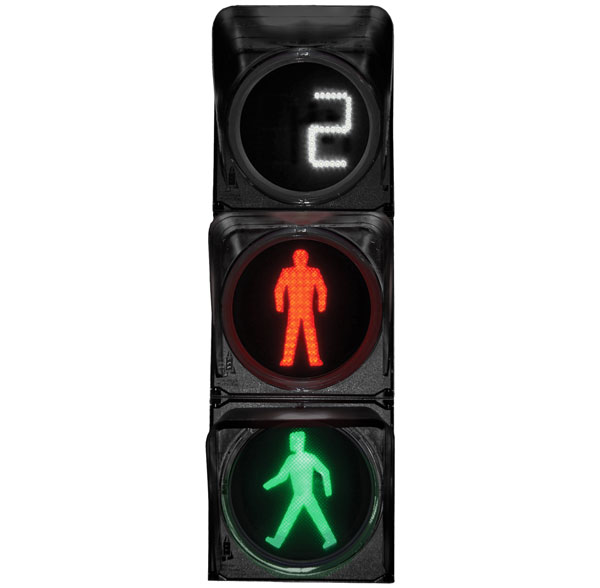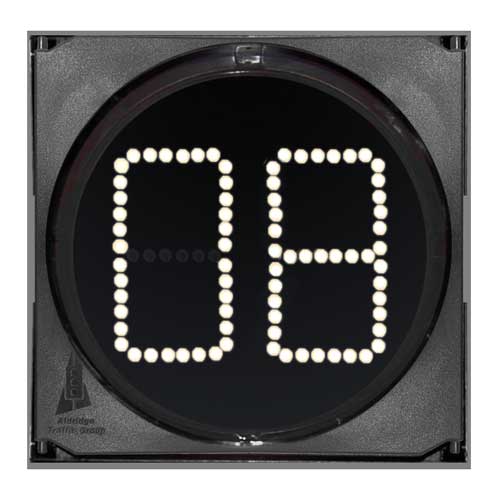Pedestrian Lanterns & Countdown Timers
LED Standman Walkman
Manufactured at Aldridge and designed to be interchangeable with options of Polycarbonate, Aluminium or “Go Green’ Enviro” housings.
LED Standman and Walkman lanterns are designed using the same modular construction and components used to produce the Aldridge range of vehicle lanterns. Many parts of the housing are interchangeable.
Pedestrian lanterns are typically supplied complete with rectangular visors.
Two basic optical systems are available, Blue/Black backs and reflector carrier options.
- Available in Aluminium, Polycarbonate and Recyclable Go Green Enviro Housing
- High luminous output
- Operates in high temperatures
- Moisture resistant
- LED driven at low current to avoid premature ageing
- Compatible with existing Traffic Controllers with dimming and monitoring
- Long-term reliability and operational life
- Low output degradation
- Low sun-phantom intensity
- Low veiling reflection
- Coloured lens in compliance with colour requirements of CIE/AS2144
- Meets the “Shut-down” requirement of AS2144
- Can operate with solar power
- Dual hinging doors
- Available with a wide range of accessories
- IP protection: IP65
- Door locking clips available as an anti-theft device
- Input Voltage: 12VDC at 6VDC Guaranteed OFF
- Constant current drive to LED array
- Input fuse protection
- Number of LEDs: 76X
- Outline Definition Method: Individual LEDs
- Dominant Wavelength: Red = 620NM (LED:- EOQ-5PRFCCO-KK )
- Input current: Red = 0.364A (12VDC Input)
- Operating Temperature: –15°C ~ +70°C
- Sighting Distance: 60m
- Warranty: 5 years and 3 months materials and workmanship
- MTBF: 87600 hours (10 years continuous operation)
- Diameter: 200mm
- Colour chromaticity coordinates standman: X = 0.697 Y = 0.303
- Colour chromaticity coordinates walkman: X = 0.04 Y = 0.641
- Substantial energy and cost-saving
- Long reliable service life
- Uniform lens illumination
- Available in AC: 240V, 230V, 48V, 42V, and 12V DC, 24V DC
- LED lanterns can be made available to meet specifications of American ITE, and BSEN 12368: 2014
- Pedestrian lanterns are supplied complete with visors and mounting straps
Pedestrian Countdown Timers
Aldridge Pedestrian Count-Down Display (PCD) utilises the latest in microprocessor and LED technologies to provide a cutting edge product.
The Pedestrian Countdown Timer (PCD) has been manufactured under the operation of Pedestrian Traffic Signals in RTA Specification TSC/4. The PCD is powered by 240V AC (or 42V AC in 42V AC version), which is taken from the signal lantern (typically the RED standing man / Don’t Walk lantern used to flash the clearance period).
No programming is required for the PCD as it auto-detects the flashing clearance period. Auto-detection occurs for at least one complete cycle before displaying the correct countdown sequence on the following cycle. Timing and synchronisation with the flashing clearance is taken from the flashing lantern (typically the RED Standman / Don’t Walk lantern is used to flash the clearance period).
Mounting the PCD is standard, designed to mount into existing Traffic Signal Housings and can be provided with or without the step down transformer.
The PCD is typically used with standard Pedestrian Traffic Signals to indicate of the remaining time for the flashing clearance period. The two-digit display only lights during the flashing clearance period and displays a countdown of the remaining seconds for the clearance period. The PCD is blank during the GREEN Walk period and RED Don’t Walk Periods.
A configuration jumper is used to enable or disable leading zero-digit blanking. Leading zero blanking provides additional visual feedback to distinguish clearance periods below 10 seconds.
- Utilising the latest in LED technology for low power, high brightness, and long operational life.
- Built-in intelligence to detect the pedestrian clearance period.
- Designed to operate with RTA Equipment Specification No. TSC/4 for Pedestrian Traffic Signals.
- On-site configurable leading zero-digit blanking.
- No additional programming or configuration required.
- Works in conjunction with Aldridge Pedestrian Signal Lanterns, compliant with Australian and International standards.
- Australian designed and Manufactured.
- Available with IP65 Signal Lanterns Housings.
- U.V stabilised components.
- Modular components for easy maintenance.
- Fits standard 200mm Traffic Signal Lantern Housings.
- Simple installation for new or existing traffic signals.
- Two 7-segment digits
- Standard Leading Zero Digit Blanking or Non-leading Zero Digit Blanking option.
- 240V AC 50Hz (or 42V AC 50Hz in 42V AC version)
- Power is taken from the Signal Lantern input.
- Connects to the Signal Lantern used to indicate the flashing clearance period for pedestrian crossings. (typically the RED standing Man or Don’t Walk Lantern)
- Typically connected in parallel to the signal lantern.
- Meets all requirements of AS-2144
- High luminous output
- IP65 protection
- Coloured lens in compliance with colour requirements
of CIE/AS-2144 - LED type with long–term reliability and operational life.

